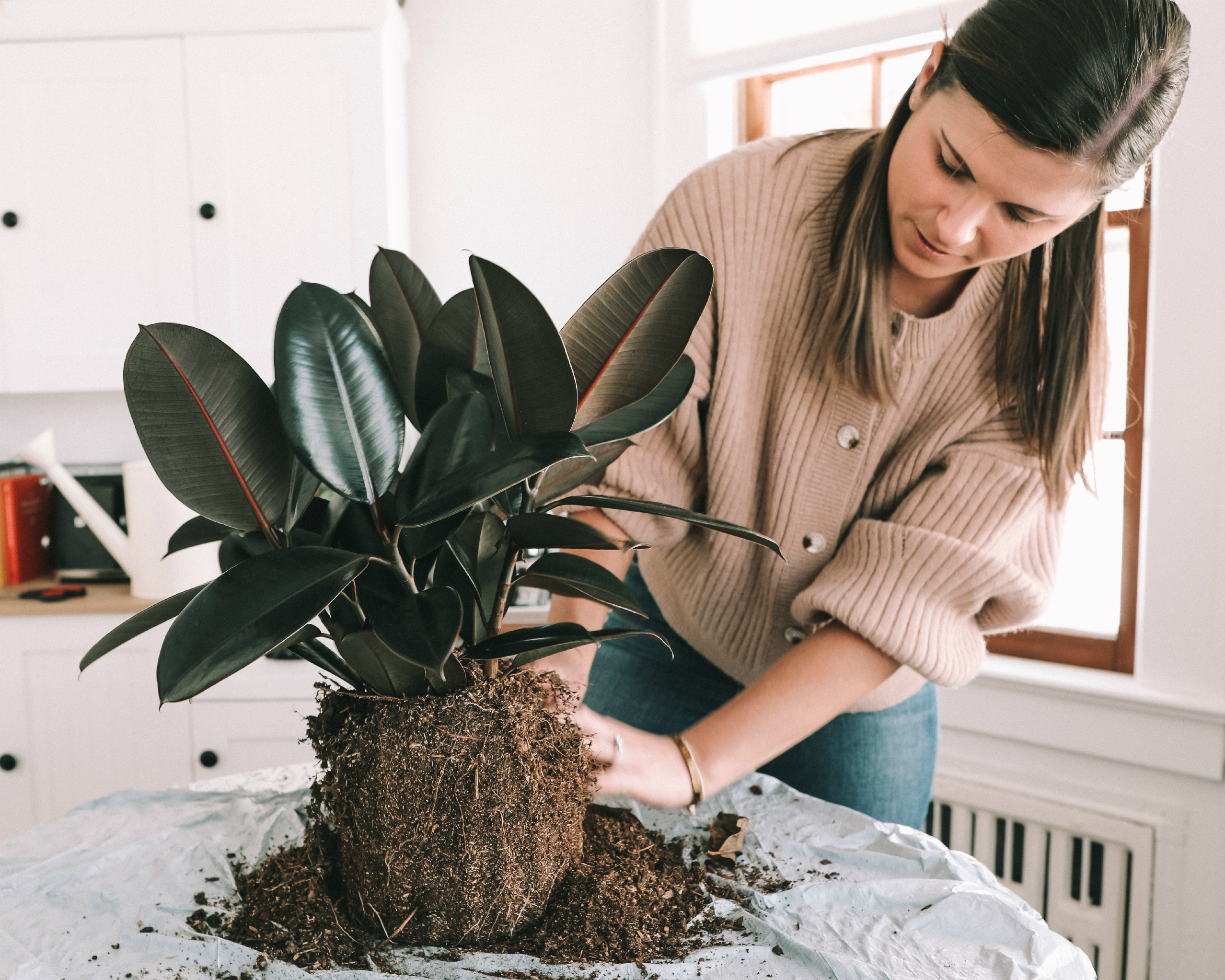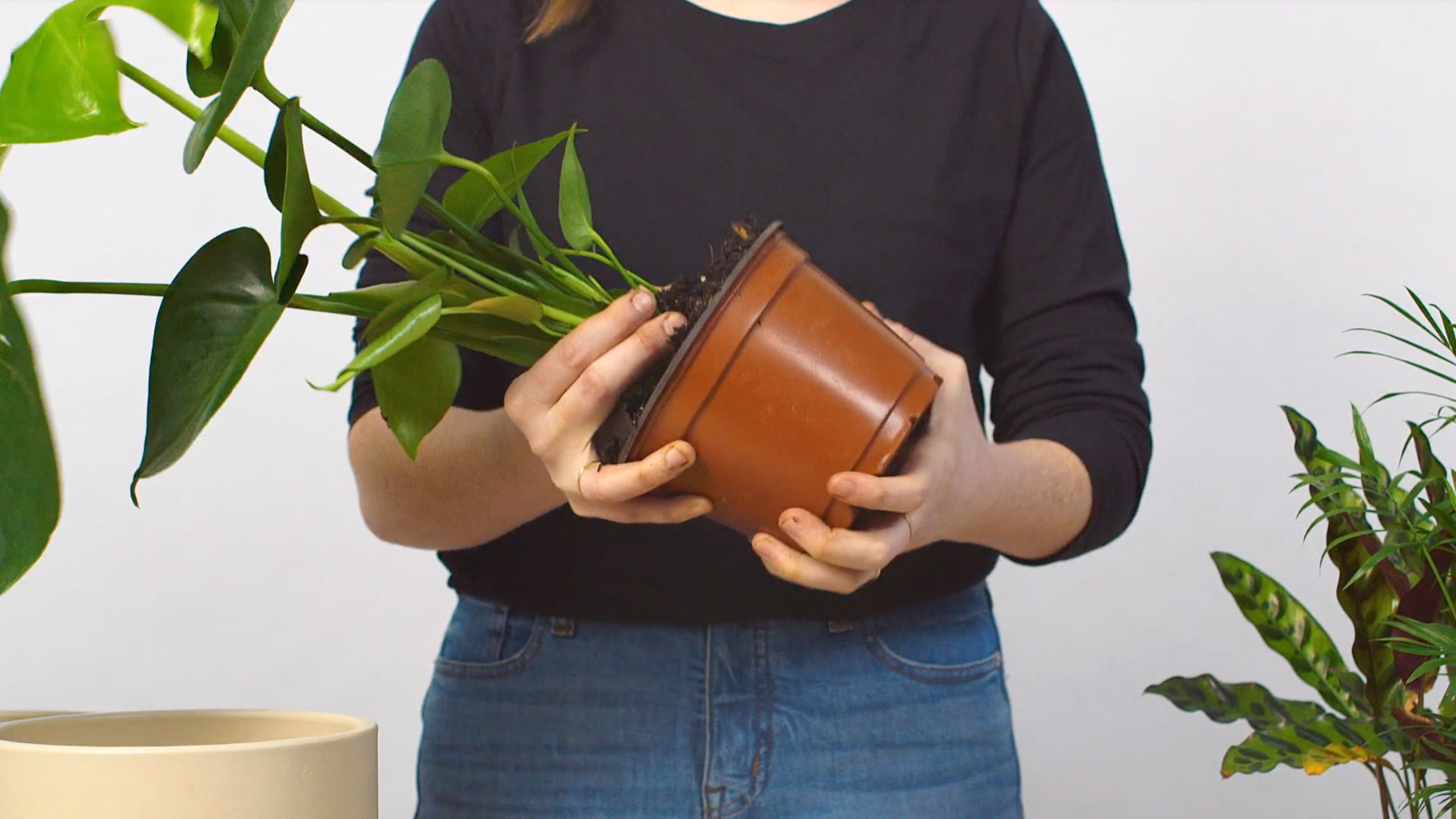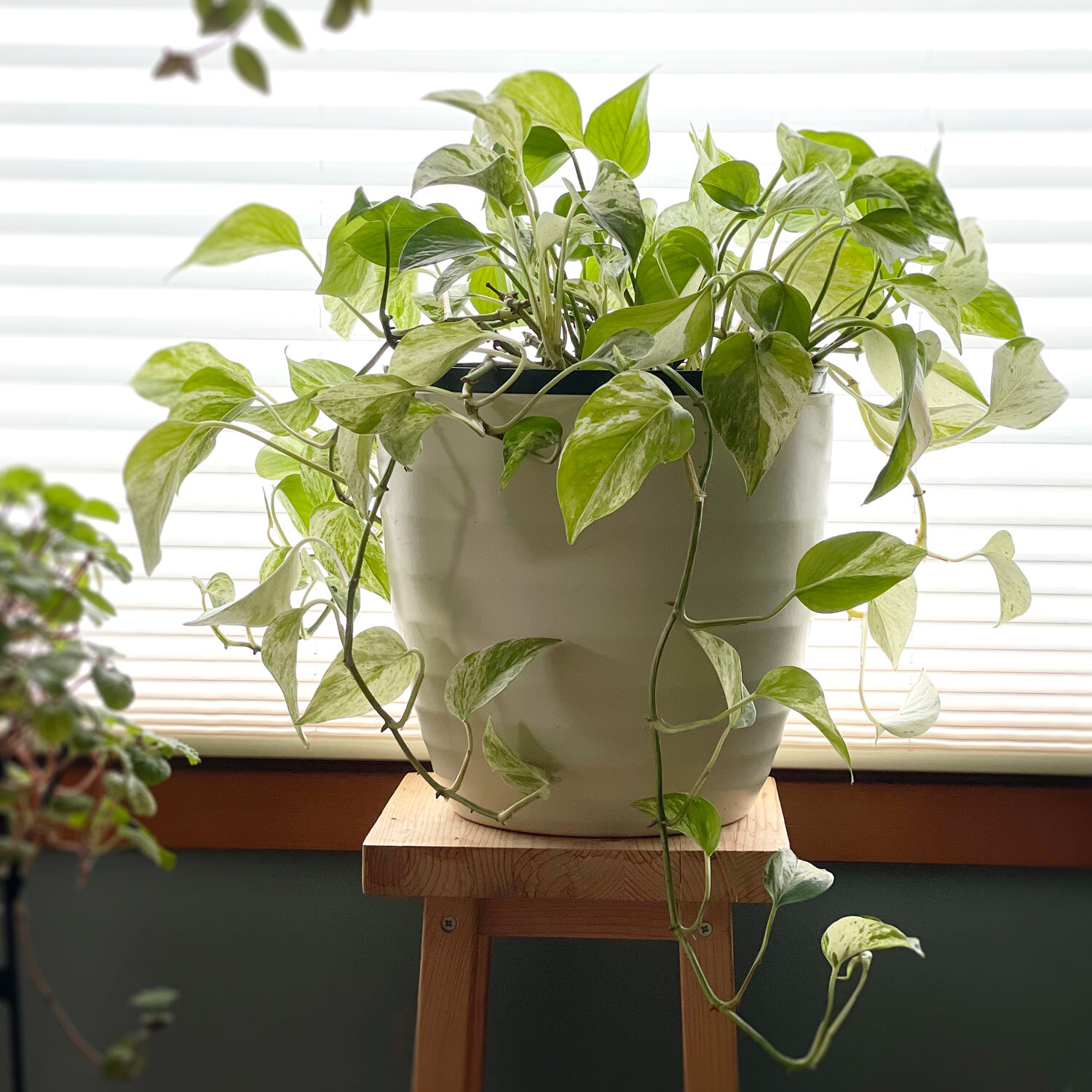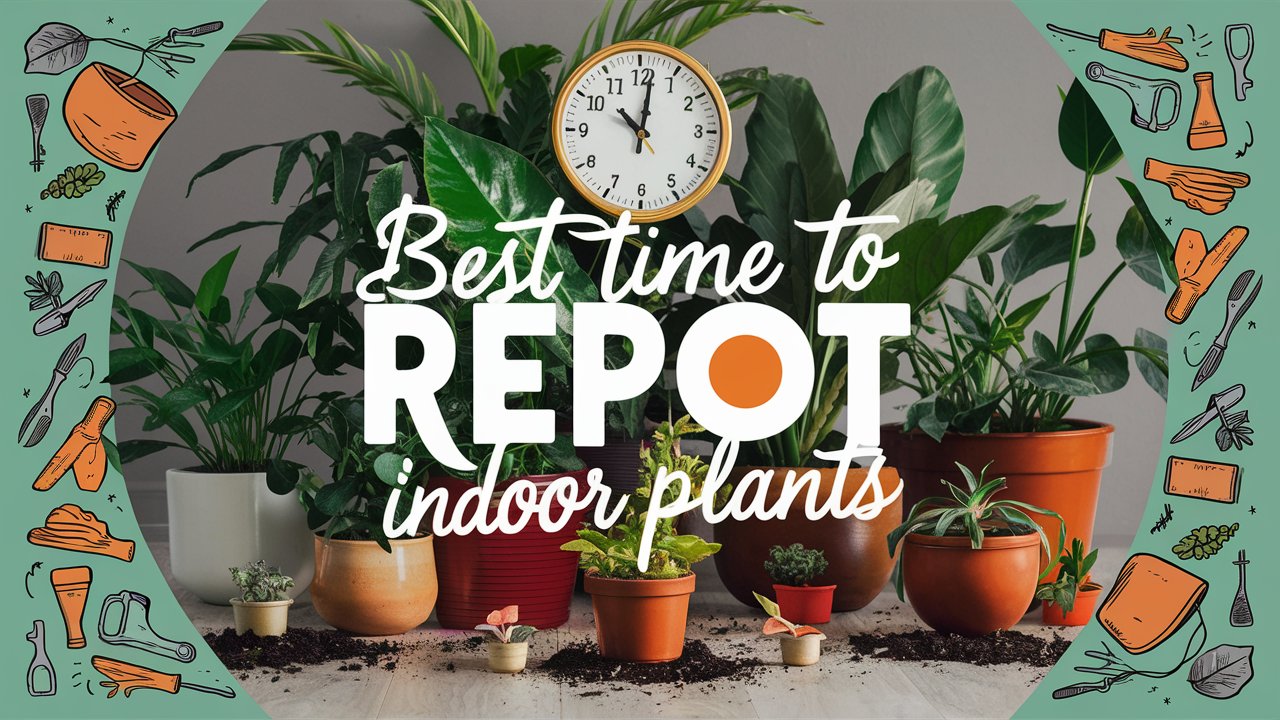The best time to repot indoor plants is during spring or early summer. This is when plants are actively growing.
Repotting indoor plants ensures their health and growth. Over time, plants outgrow their containers, leading to root-bound conditions. This can stunt growth and affect overall plant health. By repotting in spring or early summer, you take advantage of the plant’s active growth period.
Fresh soil provides new nutrients, and a larger pot allows roots to spread. Signs that a plant needs repotting include roots growing out of drainage holes, water sitting on the soil surface, and slow growth. Regular repotting keeps plants thriving and vibrant, contributing to a healthier indoor environment.

Credit: tobebright.com
Introduction To Indoor Plant Care
Indoor plants bring joy and freshness to our homes. Caring for them is essential to maintain their health. Knowing the best time to repot them is key for their growth.
Essentials Of Plant Health
Healthy plants need proper sunlight, water, and nutrients. Ensure they get enough light but not direct sunlight. Overwatering or underwatering can harm the plants. Use a well-balanced fertilizer to provide essential nutrients.
| Essentials | Importance |
|---|---|
| Sunlight | Provides energy for growth |
| Water | Keeps the plant hydrated |
| Fertilizer | Supplies necessary nutrients |
Importance Of Proper Potting
Proper potting ensures the plant’s roots have enough space to grow. If the plant becomes root-bound, it needs repotting. Use a pot that is one size larger than the current pot.
- Choose the right soil for your plant type.
- Avoid too large pots to prevent waterlogging.
- Repot during the growing season for best results.
By understanding the essentials of plant health and the importance of proper potting, you can ensure your indoor plants thrive.
Recognizing The Signs For Repotting
Indoor plants need repotting to stay healthy and grow well. Knowing the right time to repot can help your plants thrive. Let’s explore the signs that indicate it’s time to repot your indoor plants.
Roots Outgrowing The Pot
One clear sign your plant needs repotting is when the roots outgrow the pot. If you see roots growing out of the drainage holes, it’s time to move your plant to a bigger pot.
Another sign is when roots are visible on the soil surface. This means the roots are seeking more space. Check the root ball by gently lifting the plant. If the roots are tightly packed or circling the pot, repotting is necessary.
Slowed Growth Patterns
Slowed growth is another sign your plant may need a new pot. If your plant was growing well but suddenly slowed down, it might be root-bound. This means the roots don’t have enough space to grow.
Also, if your plant’s leaves are turning yellow or falling off, it could be a sign of nutrient deficiency. Repotting with fresh soil can provide the nutrients your plant needs.
Monitor your plants regularly for these signs. Repotting at the right time ensures your indoor plants stay healthy and beautiful.
Seasonal Timing For Repotting
Knowing the best time to repot your indoor plants is crucial. This ensures your plants thrive and grow healthily. Let’s explore the optimal seasons for repotting.
Spring: A Time For Growth
Spring is the most suitable season for repotting indoor plants. During this time, plants enter their growth phase. Repotting in spring helps plants adjust quickly to their new pots. The increased daylight and warmer temperatures encourage new growth.
| Benefits of Spring Repotting |
|---|
|
Considering Dormancy Periods
Plants have dormant periods, typically during late fall and winter. Repotting during dormancy can stress the plant. The plant’s growth slows down in these months.
It is best to avoid repotting during these periods. The lack of growth means the plant can’t adjust well. Repotting during dormancy can lead to root damage.
| Times to Avoid Repotting |
|---|
|
Always check your plant’s specific needs. Some plants may have different dormancy periods. Ensure you understand your plant’s growth cycle. This way, you can choose the best time for repotting.
Selecting The Right Pot
Choosing the right pot is crucial for your indoor plants’ health. The pot affects root growth and overall well-being. Consider the material, size, and drainage when selecting a pot.
Material Considerations
Different materials offer unique benefits for plant health. Here are some popular options:
- Clay Pots: These are porous, allowing air and moisture to reach the roots. They are ideal for plants that prefer drier soil.
- Plastic Pots: These are lightweight and retain moisture well. They are suitable for plants that need consistent moisture.
- Ceramic Pots: These come in various designs and are great for decorative purposes. Ensure they have drainage holes.
- Metal Pots: These are durable but can heat up quickly. Use them with a liner to protect roots.
Size And Drainage Essentials
Choosing the right size and ensuring proper drainage is essential. Consider these factors:
| Size | Importance |
|---|---|
| Root Space | Ensure the pot provides enough room for root growth. |
| Growth Potential | Choose a pot slightly larger than the current one. |
Proper drainage is crucial to prevent root rot. Follow these tips:
- Ensure the pot has drainage holes.
- Use a saucer to catch excess water.
- Add a layer of gravel at the bottom.
These considerations will help your indoor plants thrive. Choose wisely and enjoy healthy, happy plants.
The Repotting Process
Repotting your indoor plants is crucial for their health and growth. The repotting process allows fresh soil nutrients and more space for the roots. This section will guide you on how to repot your indoor plants effectively.
Step-by-step Guide
Follow these simple steps to repot your indoor plants:
- Choose the Right Time: Early spring is ideal for most plants.
- Select a New Pot: Ensure it is 1-2 inches larger in diameter.
- Prepare the New Pot: Add a layer of fresh potting mix at the bottom.
- Remove the Plant: Gently take the plant out from its current pot.
- Loosen the Roots: Carefully untangle any roots that are circling the root ball.
- Place in New Pot: Position the plant in the center of the new pot.
- Add Soil: Fill in around the root ball with fresh potting mix.
- Water Thoroughly: Give the plant a good soak to settle the soil.
Aftercare For Repotted Plants
After repotting, provide special care to ensure your plant thrives:
- Watering: Keep the soil moist but not soggy.
- Light: Place the plant in a well-lit area but avoid direct sunlight initially.
- Humidity: Maintain a humid environment to help the plant adjust.
- Fertilizing: Wait a few weeks before adding any fertilizers to the new soil.
- Monitoring: Watch for signs of stress such as yellowing leaves or drooping stems.
Repotting might seem daunting but it’s crucial for your plant’s health. Follow this guide for a smooth and successful repotting process.

Credit: www.thesill.com
Soil Selection And Preparation
Choosing and preparing the right soil is vital for healthy indoor plants. The soil provides nutrients and supports the plant’s roots. Proper soil selection and preparation ensure successful repotting.
Nutrient-rich Mixes
Indoor plants need a nutrient-rich soil mix. This helps them grow strong and healthy. Choose a mix that has all the needed nutrients. Here are some important components:
- Compost: Adds essential nutrients.
- Perlite: Improves drainage and aeration.
- Peat Moss: Retains moisture.
Look for a soil mix specifically designed for indoor plants. This ensures the right balance of nutrients and drainage.
Prepping Soil For Transition
Proper soil preparation is key to a smooth transition. Follow these steps for the best results:
- Moisten the Soil: Slightly damp soil helps roots settle.
- Loosen the Soil: Break up any clumps for better root growth.
- Fill the Pot: Add soil to the bottom of the new pot.
Ensure the soil is at the right level for the plant. This helps the plant adjust to its new home more easily.
Use a table to compare different soil types:
| Soil Type | Best For | Key Components |
|---|---|---|
| All-Purpose Potting Mix | Most indoor plants | Compost, Perlite, Peat Moss |
| Cactus Mix | Succulents and cacti | Sand, Perlite, Peat |
| Orchid Mix | Orchids | Bark, Charcoal, Perlite |
Repotting your plants with the right soil mix ensures they thrive. Proper soil preparation is essential for healthy root growth and plant development.
Common Mistakes To Avoid
Repotting indoor plants can be tricky. Many plant owners make common mistakes. These errors can harm your plants. Learn what to avoid for healthy plants.
Overpotting Risks
Overpotting happens when you use a pot that’s too large. This can lead to several problems:
- Too much soil retains excess water.
- Roots can’t use all the soil quickly.
- Excess water can cause root rot.
Choose a pot that’s just a bit larger. This ensures proper growth and water management.
Neglecting Root Health
Root health is vital for plant well-being. Neglecting roots can cause many issues:
- Roots may become tangled or bound.
- Poor roots lead to weak plant growth.
Always check the roots before repotting. Trim any dead or damaged roots. This promotes healthy growth.

Credit: www.swansonsnursery.com
Advanced Tips For Seasoned Gardeners
Seasoned gardeners often seek advanced tips to perfect their indoor plant care. This section provides expert advice on custom soil blends and innovative potting techniques. These methods enhance plant health and growth.
Custom Soil Blends
Creating a custom soil blend ensures your plants get the best nutrients. Different plants require different soil compositions. For instance, succulents need a well-draining mix. Orchids thrive in a bark-based blend.
- Succulents: Use a mix of sand, perlite, and potting soil.
- Orchids: Combine bark, charcoal, and perlite.
- Ferns: Opt for peat moss, perlite, and vermiculite.
Experiment with ratios to find the ideal balance. Test soil moisture retention to avoid overwatering. Custom blends improve plant health significantly.
Innovative Potting Techniques
Advanced potting techniques can boost indoor plant growth. Try double-potting for better root aeration. This involves placing one pot inside another with space between.
- Select two pots: one slightly larger than the other.
- Place small stones at the bottom of the larger pot.
- Insert the smaller pot on top of the stones.
Another technique is air layering. This promotes root growth on a plant stem before potting. It works well for plants like rubber trees and monstera.
These advanced tips help seasoned gardeners maintain thriving indoor plants. Experimenting with custom soil blends and innovative potting techniques yields rewarding results.
Frequently Asked Questions
When Should You Repot Indoor Plants?
Repot indoor plants every 12-18 months or when roots outgrow the pot. Spring is the best time to repot.
Can I Repot Houseplants In Winter?
Yes, you can repot houseplants in winter. Choose a warm, sunny day to minimize plant stress.
Should You Remove Old Soil When Repotting?
Yes, remove old soil when repotting. It helps eliminate pests, diseases, and provides fresh nutrients for the plant.
How To Repot A Plant Without Killing It?
Gently remove the plant from its pot. Loosen the roots. Place it in a larger pot with fresh soil. Water thoroughly. Keep in indirect sunlight.
Conclusion
Repotting indoor plants at the right time ensures healthier growth. Spring is often the best season to repot. Look for signs like roots showing or slowed growth. Proper repotting helps plants thrive. Remember to choose the right pot size and fresh soil.
Happy gardening!

My mission is to help you bring the beauty of nature indoors with expert advice, detailed plant care guides, and creative design ideas.




